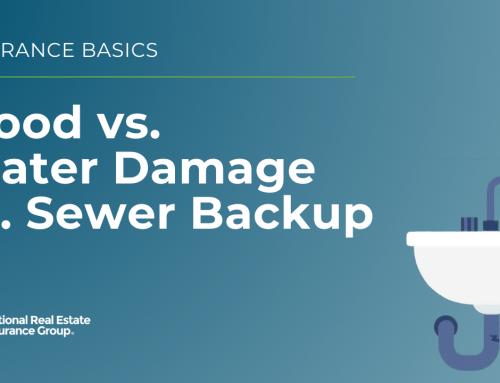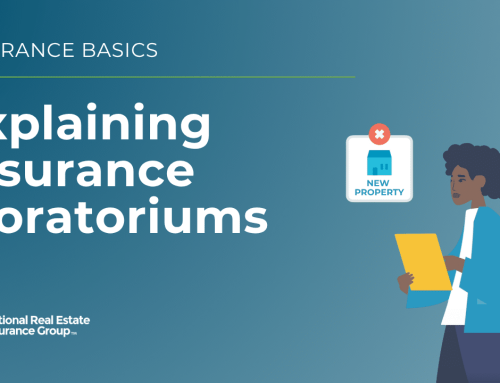Though insurance shouldn’t be your only strategy for managing risk, it can be a lifesaver if you experience catastrophic property damage. To take full advantage of this risk management tool, it’s crucial to know what your insurance policy holds you accountable for. Did you know that there are actions you must take for your insurance carrier to provide your full insurance benefits? If you don’t follow the provisions of the policy, the carrier could deny a claim that might have otherwise been covered. Today, let’s address the key responsibilities most property policies require of you as the insured, so your valuable coverage will remain fully available when you need it most!
Foundations: The Insurance Contract & the Purpose of Insurance
Before we investigate your responsibilities, it is essential to understand the fundamental nature of the insurance contract. Yep, the insurance policy is a contract between the insured (you) and the insurer (insurance company). It basically works like this: you pay them a premium, and they promise to pay you when your property is damaged under the circumstances defined in the contract. You also have some other responsibilities in addition to paying the premium, but we’ll discuss that in a minute.
It’s also very important that you grasp the foundational purpose of insurance benefits. Though financial advisors may offer insurance products, property insurance is not intended as an investment vehicle, so don’t get the two confused. The rates you pay for your property insurance are based on the cost to restore your property back to the condition it was in just prior to the loss. Its intent is not to profit, but rather to make you whole again. You will have to produce a profit with your own blood, sweat, and (hopefully not) tears.
Some also mistake their insurance premium as payment for a maintenance contract. While a maintenance contract is to help pay for expenses incurred because of “wear-and-tear” (the deterioration that happens over time), insurance contracts cover sudden, unforeseen, unintended, and unplanned events.
Now that we have those insurance fundamentals covered (no pun intended), let’s talk about a few responsibilities you will likely find in your property policy. It is essential to familiarize yourself with them and abide by them if you want to maximize your insurance benefits.
Protective Safeguards
Have you ever heard of a “protective safeguard?” These are conditions your property must meet for coverage to be available in the event of a loss. Two common examples are:
- to have working smoke detectors in each unit, or
- to have vacant properties boarded and secured.
Familiarize yourself with any protective safeguards listed in your policy and then make sure they are in place. Without them, any damage associated with their absence may not be covered.
Your Duties in the Event of a Loss
So, what other responsibilities do you have according to an insurance contract? Well, if you have a loss, the insurance company is counting on you to comply with the duties listed below. Doing so will maximize your insurance benefits, but not doing so can come with consequences ranging from the denial of your claim to insurance fraud. But have no fear – following this list is also very easy:
1. Notify the police if a law may have been broken.
If there is a break-in or a suspicious fire, your insurer will want a copy of the police report. Whether a fire is suspicious or not, they will also want a copy of the fire report. Never put yourself in danger by entering a property that has been broken into or damaged by fire: let the local authorities do their job to investigate and make sure the area is safe before doing your own walkthrough.
2. Take all reasonable steps to protect the property from further damage, keeping a record of any expenses.
This is called “mitigating the loss.” It is very important to protect your property from further loss after it has already been damaged. For example, you may need to re-secure doors and windows, tarp the roof, or board up the property to keep trespassers, animals and weather out. Not protecting your property from excess damage can complicate the investigation process and may keep you from getting the proper – or any – settlement for your claim.
3. Cooperate with the insurer in the investigation or settlement of the claim.
It is always in your best interest to be cooperative with your insurance company. But following their lead usually makes for a shorter and smoother claims process. You are certainly free to disagree with their assessment but be professional in the way you handle any disagreements. They may also examine any insured under oath about any matter related to the insurance claim and require you to sign off on your answers to the questions they ask. If you follow the Golden Rule and tell the truth, you should have nothing to worry about.
4. Give prompt notice of the loss or damage, including a description of the property involved.
Giving prompt notice means as soon as you are able. Many insurers may deny coverage on something that might have been covered if you wait too long to report it. Most insurers allow ample time, usually 60 days, to report your loss after the damage is discovered; however, reporting a loss as quickly as possible makes a claim easier for your insurer to settle and helps your cash flow get back on track.
5. As soon as possible, give the insurer a description of how, when, and where the loss or damage occurred.
Most insurers will have a designated form to report an incident and initiate the claims process. (This is different than the Sworn Proof of Loss discussed later.) Be as thorough as possible when describing the damage on this form. Small details that may not seem significant to you may be important to your insurer and will help them adjust the loss fairly.
6. If requested, give a complete inventory of the damaged and undamaged property, including quantities, costs, values and amount of loss claimed.
Typically, getting a bid from a contractor or several contractors for any repair work needing to be done satisfies this requirement. The adjuster will of course do their own assessment and would ideally like to see that their assessment of the damages lines up with your chosen contractor’s bid.
7. Permit the insurer to take samples of damaged and undamaged property for inspection, testing, and analysis.
This seems self-explanatory, but you will need to allow them access to whatever they need to physically examine to appropriately settle the loss. Not doing this willingly could signal to your insurer that something suspicious is at hand. If you need to remove damaged materials during your mitigation process, that is fine, just be sure to keep the damaged material on site so the adjuster can examine it before disposal.
8. Permit the insurer to inspect the property as often as may be reasonably required.
The more cooperative you are with the insurer, the smoother the claims process will go. If there is a question about the value of a particular item or if they need more information, they reserve the right to inspect the property for an additional time.
9. Allow the insurer to examine your books and records and take copies if necessary.
If you are monitoring the costs of a renovation project or keeping track of expenses on your rental properties for tax purposes, this should not be difficult to comply with. If you have Replacement Cost coverage, you will need to show them copies of receipts for your repairs to request reimbursement for any depreciation initially withheld from your settlement. No, this would not be an IRS-caliber examination, but your before and after photos are not enough proof, sorry!
10. Send a signed Sworn Proof of Loss containing the information requested to investigate the claim.
You may be asked to submit this document during the claims process. The purpose is to obtain a formal statement from you, the policyholder, regarding the true circumstances and scope of the property loss so they can determine if they are liable for the claim. Your insurer may also require it to be notarized. It usually includes:
- Personal data like name and address
- Proof of ownership
- Your statement regarding the date and cause of loss
- Your estimate of the property loss and documents that support your loss estimate
- Amount of claim submitted
Submit the Sworn Proof of Loss within 60 days of the insurance company requesting it. Failure to do so may result in the denial of your claim and no payment for your otherwise covered property loss (!). If you have any questions as to what to specifically include, don’t hesitate to ask your insurance company. They should be happy to help you fill it out correctly.
Final Notes on Insurance Benefits
Any contract, including your insurance policy, can make for a sleepy read. However, understanding the contracts you sign is critical and can have a huge impact on your financial well-being. We hope that you now have a better understanding of what your insurance company requires of you, so you can get the largest benefit out of the premiums you pay. Make sure you take the time to get to know your specific policy(ies) too. If you have questions about your insurance coverage, contact your agent, who should be glad to help you.







